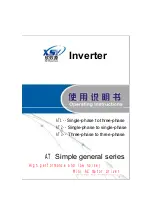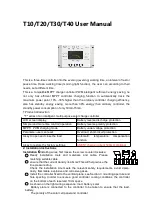
Appendix B: Containers, Codecs, and Vantage Actions
Vantage Actions
311
Lightspeed Live Capture User Guide
Flip64
The Flip64 action is a 64-bit multicore-optimized encoder running under the Transcode
Service that transcodes media from one or more input files into another format as
specified by the output configuration. Available resolutions extend from SD to UltraHD
and 4K in a broad range of file formats, from QuickTime to MPEG-4 and TIFO, and
including encoding for x264, x265 (H.265 HEVC), MXF, and many more. This action is
Open Workflow capable.
Split
The Split action is an optional, licensed feature that divides media files into multiple
media reference files, for the purpose of significantly speeding up transcoding of long-
form media by enabling parallel transcoding.
In the context of a split-and-stitch workflow, the workflow, actions, services, and the
Vantage domain in general should be configured to ensure that the parallel
transcoding actions execute in the most efficient manner in order to achieve the
highest performance gains.
The Split and Stitch actions are used in conjunction with each other. The Split action
divides the incoming media into segments. After transcoding the divided media
segments by parallel transcoding actions, the Stitch action creates a media reference
file that defines the reconstituted media. The Stitch action is typically located at the
nexus of all preceding, parallel transcoding actions, where it passes the reference file to
a Flip64, Tempo, or Conform action where the final, reconstituted media file is
generated.
Stitch
The Stitch action is an optional, licensed feature that ingests multiple media files and
creates a reference file, for the purpose of significantly speeding up transcoding of
long-form media. The reference file defines a single instance of media to be
reconstituted from the member clips in a downstream transcoding action.
In the context of a split-and-stitch workflow, the workflow, actions, services, and the
Vantage domain in general should be configured to ensure that the parallel
transcoding actions execute in the most efficient manner in order to achieve the
highest performance gains.
The Split and Stitch actions are used in conjunction with each other. The Split action
divides the incoming media into segments. After transcoding the divided media
segments by parallel transcoding actions, the Stitch action creates a media reference
file that defines the reconstituted media. The Stitch action is typically located at the
nexus of all preceding, parallel transcoding actions, where it passes the reference file to
a Flip64, Tempo, or Conform action where the final, reconstituted media file is
generated.
Содержание lightspeed live capture
Страница 1: ...June 2019 277130 Lightspeed Live Capture Guide Live Capture 3 0 with ComponentPac 7 2...
Страница 22: ...Contents 22...
Страница 52: ...Installing and Maintaining the Server Monitoring Lightspeed Live via SNMP 52 Lightspeed Live Capture User Guide...
Страница 196: ...Using the Tape Capture Web Application Using the Job Status View in Tape Capture 196 Lightspeed Live Capture User Guide...
Страница 208: ...Calculating Live Capture Resources Lightspeed Live Capture Resource Calculator 208 Lightspeed Live Capture User Guide...
Страница 216: ...Appendix A Support Using Log Files and Other Support Information 216 Lightspeed Live Capture User Guide...
Страница 316: ...Appendix B Containers Codecs and Vantage Actions Vantage Actions 316 Lightspeed Live Capture User Guide...
















































